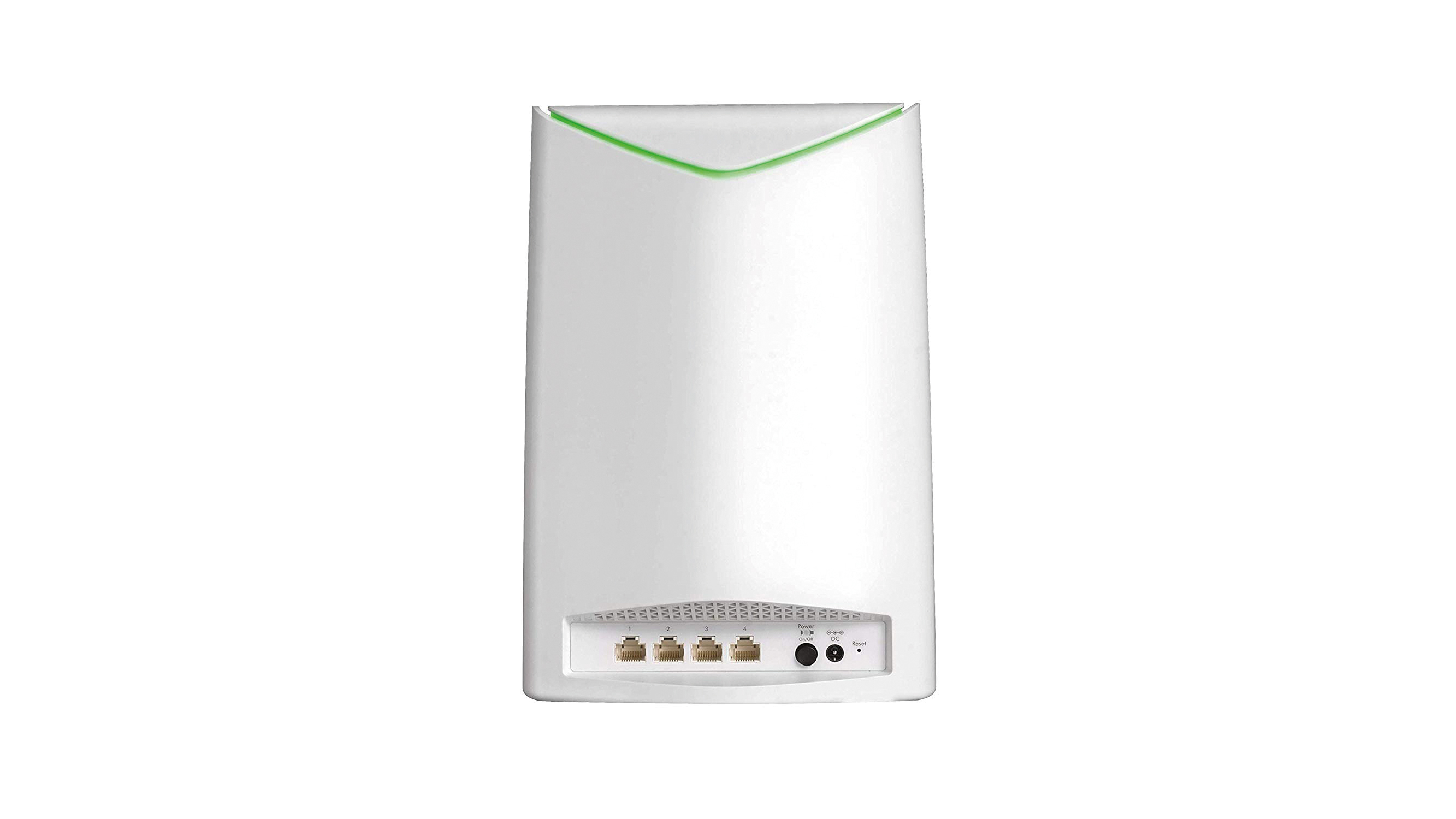Netgear WAC564 review: A first-class mesh system
An affordable 802.11ac access point with good performance and mesh support for easy expansion


-
+
Fast speeds
-
+
Quick mesh deployment
-
+
Strong management features
-
-
Desktop cloud management requires premium subscription

Netgear touts its WAC564 as the first business-class mesh system: it’s designed for offices where network cabling is impractical, or for scenarios where you might want to quickly provision temporary wireless services over a large area. You don’t need to tear up your existing infrastructure either, as it will work with existing Netgear WAC540 APs (access points) – or you can create a mesh network entirely out of WAC564 units, or use one as a standalone AP.
Performance-wise, the WAC564 boasts an AC3000 wireless rating, representing 400Mbits/sec on the 2.4GHz band and 867Mbits/sec on the main 2x2 5GHz radio, along with 1,733Mbits/sec on a second 4x4 5GHz radio, which functions as a backhaul link for meshing duties. There are four Gigabit Ethernet ports too, the first of which is used for your LAN connection in standalone or root mode.
Installation is swift, although there’s no PoE support, so you’ll have to use the provided power supply (and be warned that its 1.8m cable length could limit your positioning options). On opening the AP’s web console for the first time, you’re required to set a secure admin password, then invited to create up to four SSIDs per radio band, apply encryption settings and enable advanced features such as client isolation, captive portals and URL tracking and reporting.
To take advantage of the WAC564’s mesh capabilities, you’ll need to be signed up with Netgear’s Insight cloud service, which provides a central web portal for managing all of your wireless networks, along with Insight-enabled switches, routers and NAS appliances. The basic service is free for the first two devices, after which you’ll pay £4.47 per year for each extra device – but note that this only lets you access the service via the Insight mobile app. If you want to use the desktop cloud portal, you’ll need Insight Premium, which costs £8.95 per device/year and also enables advanced features such as Wi-Fi roaming and scheduling.
Adding the WAC564 to our Insight Premium account couldn’t have been easier: we used the iOS app on our iPad to scan the QR code on its base and it was instantly registered. It’s also possible to scan the barcode on the box, manually enter the device’s serial number or go through an old-school network discovery process. If you later want to install additional units as mesh satellites, it’s even more straightforward: just power them up without a network connection and they’ll be spotted as unclaimed extenders.

After we’d assigned the AP to our organisation, the WAC564’s local management functions were disabled and the firmware was updated to the latest version. As the first unit to be added, it was also automatically set as a mesh root node, and immediately started broadcasting the site SSIDs we had configured previously.
To configure a mesh network, you simply assign extenders to your root node from either the desktop portal or mobile app. Up to four extenders can be connected, and your mesh topology and backhaul signal strength can be viewed from the root node’s settings.
In our performance tests the WAC564 acquitted itself creditably. We connected a Windows 10 desktop (equipped with a Linksys WUSB6400 network adapter) to the root node on the 5GHz band and saw close-range file copies average 65MB/sec, dropping to 59MB/sec from 10m away.
Ideally, mesh extenders should be located within line of sight of the root AP, and with our units situated in this way we saw similar speeds to the above. The system copes well with obstructions, however: when we placed an extender on the next floor up, the root node reported a poor backhaul connection, but the SweetSpots iOS app running on our iPad still measured a very decent 33MB/sec throughput.
The WAC564 is ideal for SMBs wanting a wireless solution that can be easily expanded on demand. Enabling mesh operation entails a small extra expense for an Insight account, but it’s hard to begrudge that because it also adds some valuable management features, making this arguably the most versatile AP around.
Netgear WAC564 specifications
| Band support | Wave 2 AC3000 tri-band 2.4GHz/5GHz 802.11ac |
| Radios | 2x2/4x4 MU-MIMO, 6 internal aerials |
| Ports | 4 x Gigabit Ethernet |
| Additional features | Ceiling/wall mount brackets, external PSU with 1.8m cable |
| Dimensions (WDH) | 174 x 85 x 247mm |
| Weight | 930g |
Get the ITPro daily newsletter
Sign up today and you will receive a free copy of our Future Focus 2025 report - the leading guidance on AI, cybersecurity and other IT challenges as per 700+ senior executives
Dave is an IT consultant and freelance journalist specialising in hands-on reviews of computer networking products covering all market sectors from small businesses to enterprises. Founder of Binary Testing Ltd – the UK’s premier independent network testing laboratory - Dave has over 45 years of experience in the IT industry.
Dave has produced many thousands of in-depth business networking product reviews from his lab which have been reproduced globally. Writing for ITPro and its sister title, PC Pro, he covers all areas of business IT infrastructure, including servers, storage, network security, data protection, cloud, infrastructure and services.
-
 ‘Phishing kits are a force multiplier': Cheap cyber crime kits can be bought on the dark web for less than $25 – and experts warn it’s lowering the barrier of entry for amateur hackers
‘Phishing kits are a force multiplier': Cheap cyber crime kits can be bought on the dark web for less than $25 – and experts warn it’s lowering the barrier of entry for amateur hackersNews Research from NordVPN shows phishing kits are now widely available on the dark web and via messaging apps like Telegram, and are often selling for less than $25.
By Emma Woollacott Published
-
 Redis unveils new tools for developers working on AI applications
Redis unveils new tools for developers working on AI applicationsNews Redis has announced new tools aimed at making it easier for AI developers to build applications and optimize large language model (LLM) outputs.
By Ross Kelly Published
-
 Google layoffs continue with "hundreds" cut from Chrome, Android, and Pixel teams
Google layoffs continue with "hundreds" cut from Chrome, Android, and Pixel teamsNews The tech giant's efficiency drive enters a third year with devices teams the latest target
By Bobby Hellard Published